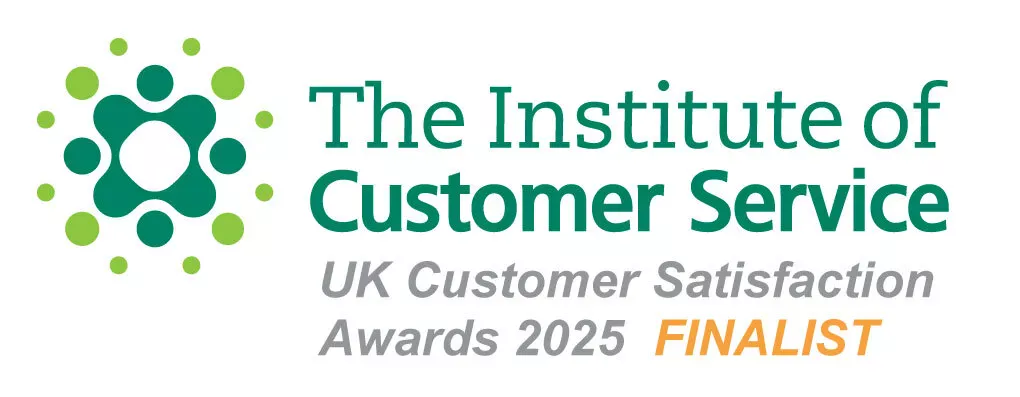CustomerSure makes it easy to get deep business insights without weeks of training.
To get the most from the platform, it’s best to understand a handful of concepts, which are the foundations of how your reports are structured.
This guide gives you an overview of all the important concepts which make up CustomerSure’s reporting suite. The other guides in this section go into more detail about how to use these concepts
Rating Questions allow you to collect satisfaction scores from your customers.
These scores express sentiment (i.e. how a customer feels) about a topic (i.e. something your business does).
Each question has a scale, i.e. 0-10, 1-5, a text scale like “Very Satisfied” to “Very dissatisfied”, or an icon scale like smiley/sad faces.
In reporting, if you’re analysing the results of a single question, we’ll show you the raw scores as the customer submitted them (i.e. 60% Very Satisfied, 20% Neither, 20% Very Dissatisfied). But if you’re comparing the results of multiple questions (i.e. in a league table or heatmap), we’ll show you a standardised score.
Standardised scores simply allow you to compare questions which use different scales against each other. If, for example, you want to see a league table of all the questions related to a given customer journey in the last quarter, it’s meaningless to directly compare questions asked on a 0-10 scale, to questions asked on a 5-point text scale, to questions asked on a 3-point smiley scale.
Instead, when comparing, we convert every score to a percentage of ‘perfect’ (i.e. 10 is 100% on a 0-10 scale, 5 is 100% on a 1-5 scale).
So if you’re looking at a single question, you’ll see the exact scores for that question. If you’re looking at a report which mixes data from multiple question, you’ll see standardised scores.
Metrics in CustomerSure are standard CX metrics, such as NPS, CES and CSAT.
Metrics are calculated from scores, but rather than taking simple averages, we perform a calculation, specific to that metric. These calculations are:
Metrics are the ‘north stars’ of your CX programme. They tell you how things are going, but not why or how. Crucially, they should never be targets, as this incentivises bad behaviour.
You can use metrics throughout your reports, for example do a NPS deep dive, rank branches by CES in a league table, or find out which topics are strongly linked to CSAT.
Topics in CustomerSure are things your organisation does that customers might express a positive/negative sentiment on.
You can collect topic data in two ways:
Topics are one of the cornerstones of reporting in CustomerSure. Whilst metrics give you a high-level summary of satisfaction and potential churn, topics give you the detail of what, specifically, customers are delighted or disappointed with.
Labels in CustomerSure are useful categories for your customer feedback. They are distinct from topics in that they don’t have sentiment applied to them. Labels are simply a way to place a piece of feedback in a certain category that’s important to your business.
Labels can be automatically applied by AI, or manually added by your team.
CustomerSure has five built-in labels:
You can add your own labels, and either use AI to add them to feedback, or add them manually.
Reporting segments are the main way you ‘slice’ and organise your reports in CustomerSure.
These segments are anything that is important to your business that you want to compare or filter on, for instance, sites/branches, teams, individual staff members, customer tiers, brands and products.
There are two main types of segment in CustomerSure: Business Areas and Feedback Segments. You can convert segments between the two types, so it’s OK to make a mistake in setup here (or OK if your needs change), but getting things set up correctly will give you better, easier to manage, reports.
This guide explains the different types of reporting segments available to you. To understand how to set these segments on customer feedback, read the segments guide.
As above, business areas are key operational areas of your business that you want to report on.
CustomerSure provides some built-in business areas, and you can add your own custom ones.
As most organisations have employees, CustomerSure has built-in staff and teams.
Teams can be nested inside other teams, i.e.
Enterprise > Support Enterprise > Sales SME > Support SME > Sales
Staff can belong to teams, but can also be assigned to feedback directly. It is also possible to assign feedback directly to a team, without also assigning it to a member of staff.
Note that, in the context of reporting, ‘assigning’ a member of staff to an item of feedback means that feedback is “about” that member of staff (i.e. this person provided direct service to the customer, or was an account manager).
Assigning members of your team to manage feedback is handled elsewhere.
Many organisations have multiple geographic locations, so CustomerSure has built in sites/branches.
Sites can be placed inside regions, and regions can be placed inside areas. Unlike Teams, this is a fixed three-level hierarchy, i.e.
US > Texas > San Antonio GB > North > Sunderland Fawcett Street
You cannot assign feeback directly to an area or region, you must assign it to a site. A region’s score is comprised of all the sites in that region, and an area’s score is comprised of all the regions inthat area.
For any other operational area of your organisation that doesn’t fit neatly into the ‘location’ or ‘team’ hierarchy, you can create custom business segments.
Custom business segments can have dashboards and managers, like Sites and Teams. They show up in the ‘Business Areas’ are of the filter bar, and alongside Sites and Teams in any reporting nav bars.
Feedback Segments are similar to Business Areas, in that they are a way of segmenting your reports into categories of interest. They should be used for any reporting categories that are not operational areas of your business.
This is because Feedback Segments don’t have managers or dashboards, they simply show up in reports as a category and a filter.
Good examples of feedback segments tend to be customer demographics, i.e. Age Group, Support Tier, or Purchase Channel.
At first, it can be difficult to work out what should be a Business Area and what should be a Feedback Segment. Don’t worry, you can’t get this ‘wrong’, as it’s easy to flip between the two. If you configure something as a Feedback Segment and realise it should be a Custom Business Segment, you can change it with the click of a button.
CustomerSure works for both B2B and B2C organisations. You can associate feedback with both a given organisation, a given individual, or both.
Associating feedback in this way will enable the ‘by Company’ and ‘by Person’ reports, show the company name/customer name fields in the filter bar, and enable reporting heatmaps/league tables by client.



